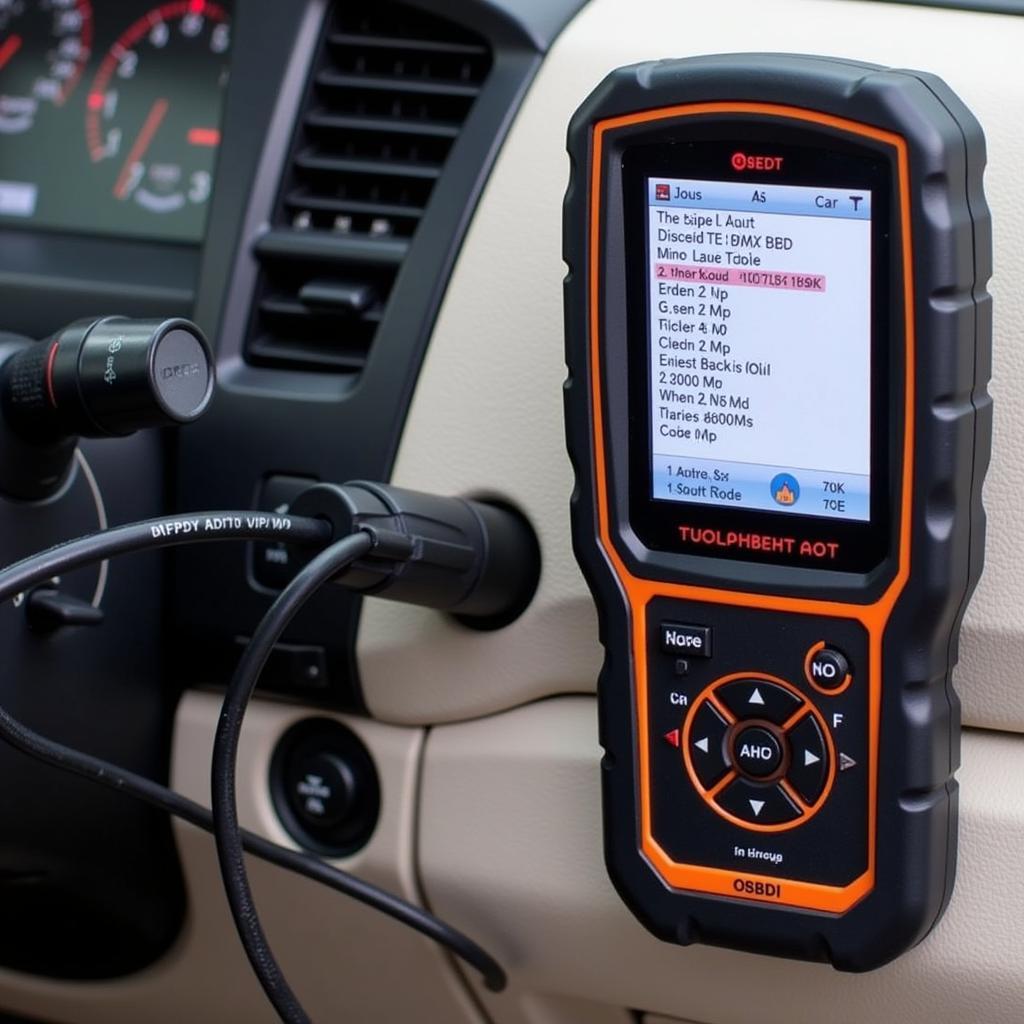The modern car is a marvel of engineering, packed with complex electronic systems that control everything from engine performance to safety features. When a problem arises, pinpointing the source can feel like navigating a labyrinth. That’s where an Obdii/eobd Car Diagnostic Tool comes in. This indispensable device acts as your personal mechanic, providing insights into your car’s inner workings and empowering you to troubleshoot issues effectively.
Understanding OBDII and EOBD Systems
OBDII, short for On-Board Diagnostics, Second Generation, is a standardized system found in most gasoline-powered vehicles manufactured after 1996 in the United States. EOBD, or European On-Board Diagnostics, serves the same purpose for vehicles sold in Europe. Both systems monitor various components and emissions-related functions, alerting you to potential issues via the check engine light on your dashboard.
How OBDII/EOBD Car Diagnostic Tools Work
These handy tools connect to your vehicle’s OBDII/EOBD port, typically located under the dashboard on the driver’s side. Once plugged in, the diagnostic tool communicates with your car’s computer, retrieving diagnostic trouble codes (DTCs) and other valuable data.
 car dashboard with obd2 scanner connected
car dashboard with obd2 scanner connected
Benefits of Using an OBDII/EOBD Car Diagnostic Tool
Owning an OBDII/EOBD car diagnostic tool offers a range of benefits:
- Save Money on Repairs: By identifying problems early on, you can avoid costly repairs down the line.
- Diagnose Issues Yourself: Empower yourself to understand and potentially fix minor issues, saving you trips to the mechanic.
- Clear Check Engine Light: After addressing a problem, you can use the tool to clear the check engine light, ensuring it doesn’t illuminate again unnecessarily.
- Monitor Car Performance: Track fuel efficiency, engine performance, and other parameters to optimize your driving habits.
Types of OBDII/EOBD Car Diagnostic Tools
A variety of OBDII/EOBD car diagnostic tools are available, each with different features and price points:
- Basic Code Readers: These affordable devices primarily read and clear DTCs, providing a starting point for troubleshooting.
- Advanced Scan Tools: Offering comprehensive diagnostics, these tools display live data streams, perform advanced functions like component activation, and may even provide repair suggestions.
- Smartphone Apps and Adapters: Budget-friendly options that connect to your smartphone via Bluetooth, allowing you to access diagnostic information conveniently.
 Mechanic using a professional-grade OBDII scanner in an auto repair shop
Mechanic using a professional-grade OBDII scanner in an auto repair shop
Choosing the Right OBDII/EOBD Car Diagnostic Tool
Selecting the right tool depends on your needs and budget. Consider the following factors:
- Vehicle Compatibility: Ensure the tool supports your vehicle’s make, model, and year.
- Features: Determine which features are essential for your needs, whether it’s basic code reading or advanced diagnostics.
- Ease of Use: Opt for a tool with a user-friendly interface and clear instructions.
- Budget: Set a budget and explore options within your price range, remembering that more advanced features often come at a higher cost.
Common OBDII/EOBD Diagnostic Trouble Codes
Here are some frequently encountered DTCs:
- P0420: Catalyst System Efficiency Below Threshold (Bank 1)
- P0300: Random/Multiple Cylinder Misfire Detected
- P0171: System Too Lean (Bank 1)
- P0135: O2 Sensor Heater Circuit Malfunction (Bank 1, Sensor 1)
Tips for Using an OBDII/EOBD Car Diagnostic Tool
- Consult your vehicle’s owner’s manual for the OBDII/EOBD port location and specific instructions.
- Research DTCs thoroughly before attempting any repairs.
- Remember, an OBDII/EOBD tool is a diagnostic aid; it doesn’t always provide the definitive solution.
The Future of Car Diagnostics
As vehicles become increasingly sophisticated, so too will car diagnostic tools. Expect to see more advanced features, wireless connectivity, and cloud-based data analysis.
 A futuristic car diagnostic tool displayed on a smartphone
A futuristic car diagnostic tool displayed on a smartphone
Conclusion
An OBDII/EOBD car diagnostic tool is an invaluable asset for any car owner, providing insights into your vehicle’s health and empowering you to address issues effectively. By understanding the different types of tools available and how to use them, you can take control of your car maintenance and save money in the long run.

Leave a Reply